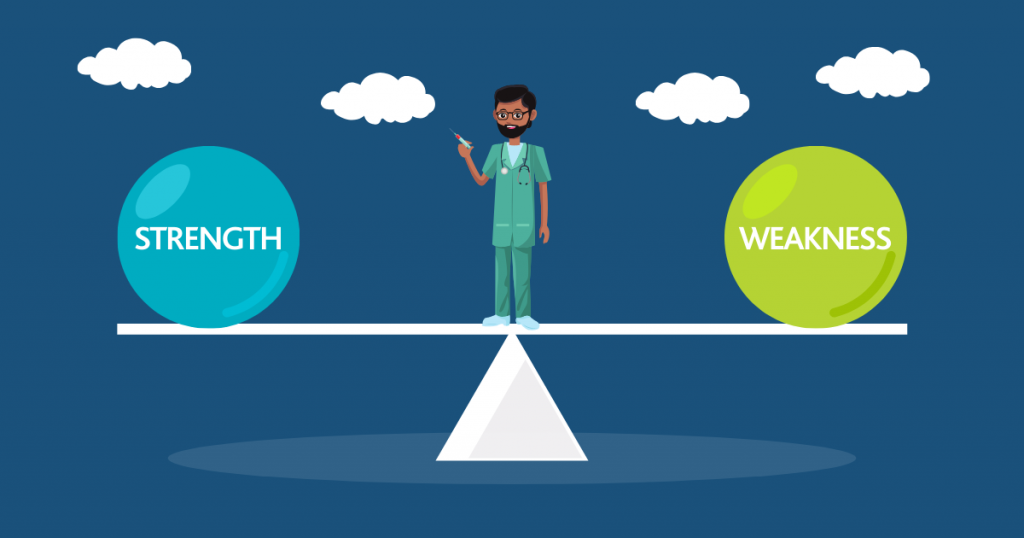Getting the most value from each OET Reading and Listening sample test that you complete
Taking an OET Sample Test is a great way to test out your skills, better understand the format and see where you can improve.
But the benefits don’t end once you have completed the Reading or Listening sample test. You can also use your answers as part of your OET preparation.
Here’s our 5 top tips about what to do with your answers to get the most out of the experience and improve your scores for next time.
1. Mark your answers using the official sample answer key
OK, so finding out how well you did seems a bit obvious and of course it's probably the first thing you think to do. But there are some things to keep in mind.
Firstly, you need to ask yourself if this was your first attempt.
If yes, this was really a fact-finding exercise to understand what the paper and the questions are like. Your score is interesting, but it wasn’t the goal. Plus, you may have allowed yourself more time to complete your answers or listened to the recording more than once which could have increased your score compared to if you had completed the paper under test conditions.
Secondly, you need to ask what score you should be aiming for.
During practice, we recommend a score in the low 30s to be confident of a B on test day. A new Listening and Reading test is written for each test each month with a different topic. This means each month the challenge of the test is slightly more or slightly less than any other month and the grade boundaries move slightly up or down to reflect this.
If you are consistently achieving 30-32 in practice, you can feel confident of achieving a B whatever the passing score. It is better to aim higher than aim for the absolute minimum.

2. Analyse the questions you got wrong
Feeling good about the questions you got correct is important, but so is taking time to analyse the questions you got wrong. By doing this you can get a better understanding of why you got this wrong.
We’ve listed a few common reasons people get questions wrong below.
Mis-reading the question
Some test-takers don’t spend enough time to really understand the question. For Parts B and C, it’s important to not just read the words in the question individually but ask yourself, "What information am I listening or reading for?".
If you haven’t done this, then it’s easier to be distracted by incorrect answer options which sound and look correct but don’t provide the best answer.
Not spelling the answer correctly
This only counts for Reading Part A, where your spelling must be 100% perfect because you can copy the answer directly from one of the texts. Avoid losing marks by making sure you take a few extra seconds after writing your answer to check it against the text and correct any misspellings.
Not answering the question at all
As you could guess, there is a simple solution to this one. Always write or select an answer for every question. No excuses.
No marks are deducted for incorrect answers, so have a guess even if you didn’t hear. This is even more important ith the multiple-choice parts of the test, as there is a reasonable chance you will guess the correct answer and gain a mark which you definitely won’t if you leave the answer blank.
Running out of time
This can happen in both Listening and Reading but is more common in the Reading test. If you don’t have enough time to read all the questions and therefore answer the question, then this is something you will need to work on.
One option is to be stricter with yourself on timing. Part A already has its own time limit, but you will need to divide up the 45 minutes for Parts B and C:
- 10 minutes for Part B
- 35 minutes for Part C with 17.5 minutes per Part C text.
You can further divide this to give yourself a set number of seconds per question and force yourself to move on after this time. Any time you have left, you can return to those questions you haven’t answered to guess an answer or work on some more.
In Listening, the recording keeps going so you break the time up. The only thing you need to do is make sure you answer each question as you hear it and move on with the recording to the next question.
If you hesitate for a few seconds, you will get left behind, which could impact your ability to answer the next question correctly.
Unfamiliar vocabulary
You probably won’t know the meaning of all the words you will hear or see during the Listening and Reading sub-tests. But if you are finding unfamiliar vocabulary in each question then this is something you need to work on.
The best way to learn new vocabulary is to both use words you're comfortable with as well as learn words you are unfamiliar with. You should record words in a notebook which you use for new vocabulary and then include them words in your speaking and writing over the next few days.
If you find unfamiliar vocabulary while listening and reading, then you need to have some strategies to deal with it. One strategy is to read around the unfamiliar word to learn as much as you can about it. Is it:
- a noun (person, place thing)
- an adjective (positive/negative)?
- Is it a positive or negative word?
Use these to understand the question or sentence as best as you can without knowing the exact meaning of the word. Don’t allow yourself to be distracted by the word; make an educated guess about its meaning and move on.

3. Identify your strengths and weaknesses
Most of the time you will do better in some parts than the others. Although you get an overall score for Listening and Reading, you want to get as many correct answers in each part as you can. This means using the correct skill for each part of the test.
Parts A, B and C build your skills incrementally. Take a look:
- Part A = Listening for and reading to find specific details
- Part B = Understanding the main idea of the communication
- Part C = Understand how speakers and writers create meaning using opinion language and examples from research.
While all the skills are connected, you can’t approach a Part C question in the same way that you do a Part A question.
Time pressure can cause you to answer each question quickly and move on. Remember, you have more time for Reading Parts B and C as they require you to think more about the question and what each example is telling you. So don’t rush. Use the time to think about what you are hearing or reading, and choose the answer from the evidence available to you.
4. Put them into practice
Now you have an idea of your mistakes, you need to work on them. For some, like misreading the question, this is something to remember the next time you do a practice test. Slow down by just a few seconds as you read the question and ask yourself at the end of it – what information am I being asked to listen or read for?
Other mistakes like vocabulary and timing need time away from practice tests to improve. It’s just as valuable - if not more valuable - spending time working on your skills. Every hour spent working on improving your skills is probably equal to the value of taking 2-3 practice tests.
It’s only by getting better at listening and reading in English that you will improve your score on test day. You can’t do this simply by taking a high number of practice tests.
5. Use Reading and Listening tests to improve your Writing and Speaking
You can use your Listening and Reading papers to practice Speaking and Writing too.
For example, you can take the topic of the Listening Part A consultations and use the notes to write a referral letter. It should include all the relevant patient information the referring doctor or the specialist or allied health professional will need to provide the patient with further treatment.
If you want to practise your speaking, you can use the topic from the Reading Part A texts. Imagine you have a patient or relative of a patient experiencing this condition or undergoing this process and ask a friend or colleague to take the part of the patient or relative. Between you, discuss the condition or process, explaining what is going to happen and answering any questions you are asked.
If you’re looking to learn more about OET Preparation, head over to the Preparation Information page. You will find guides, articles and videos for you to work through.
